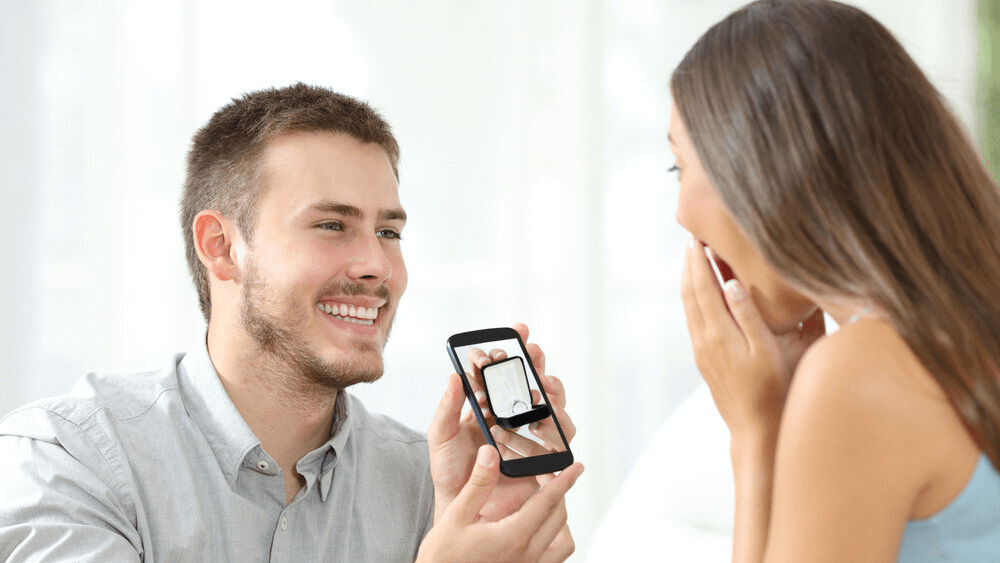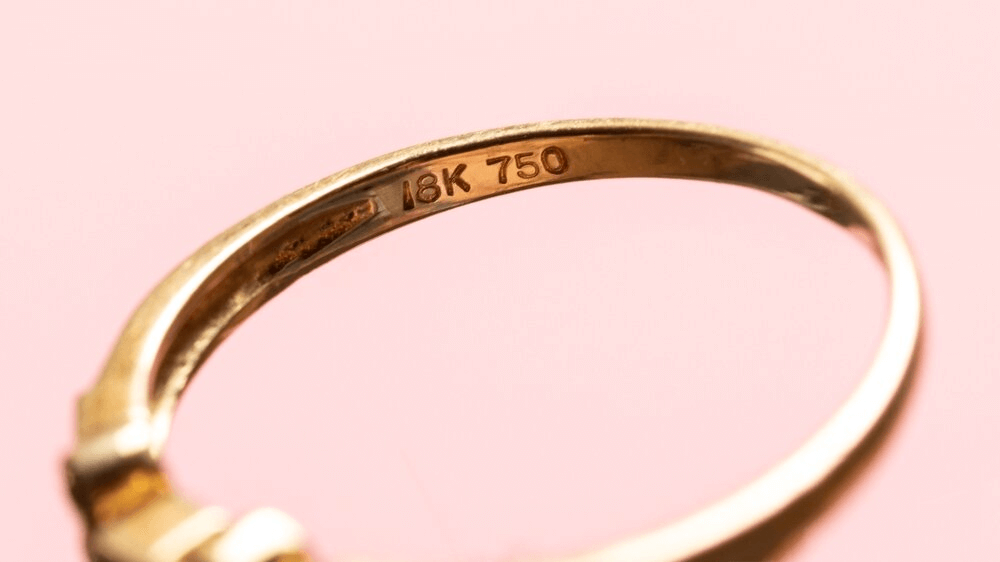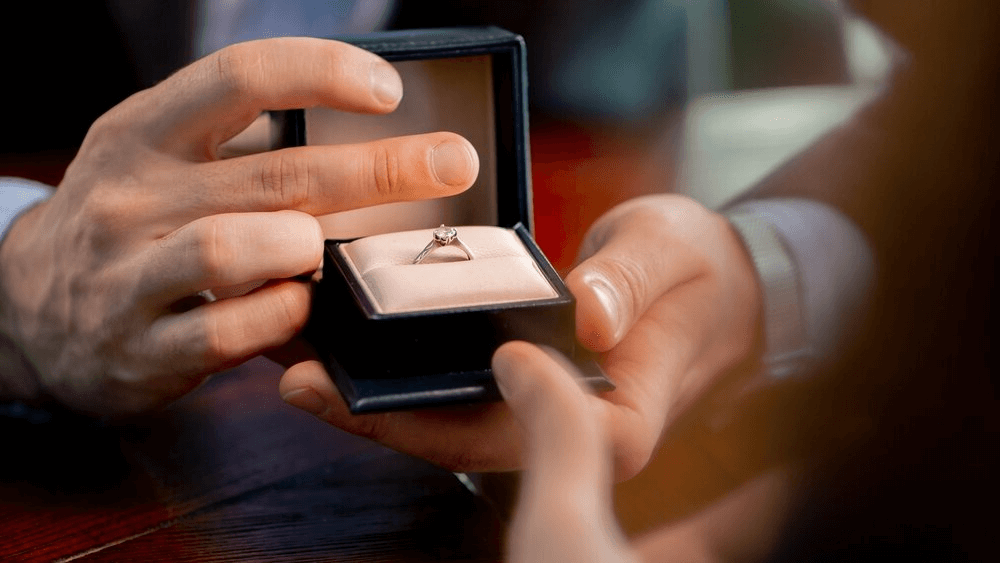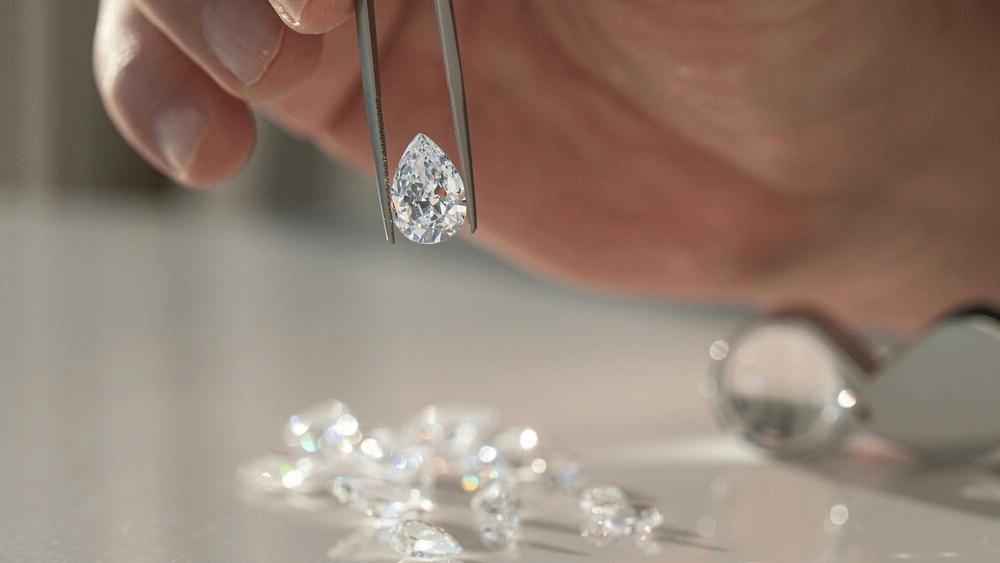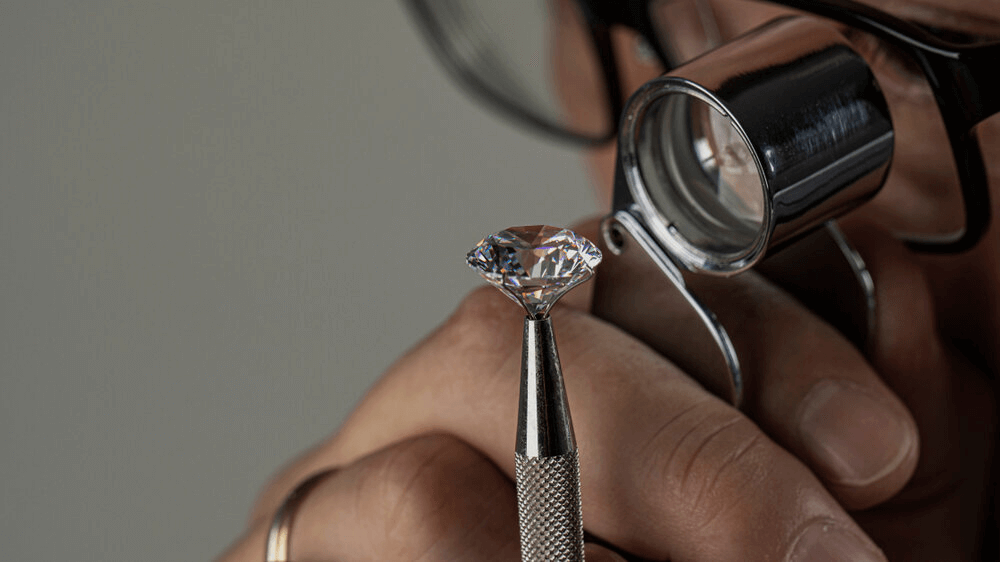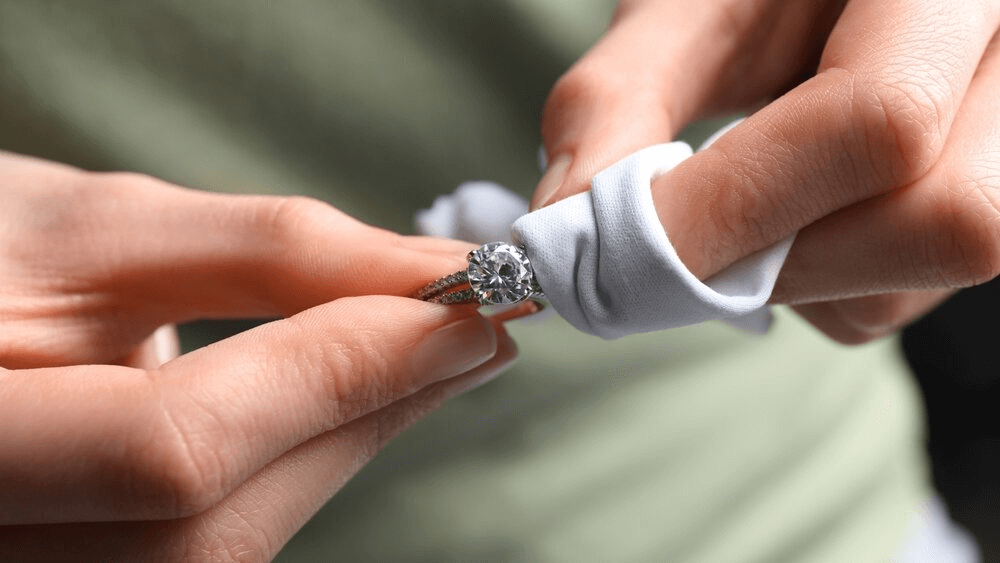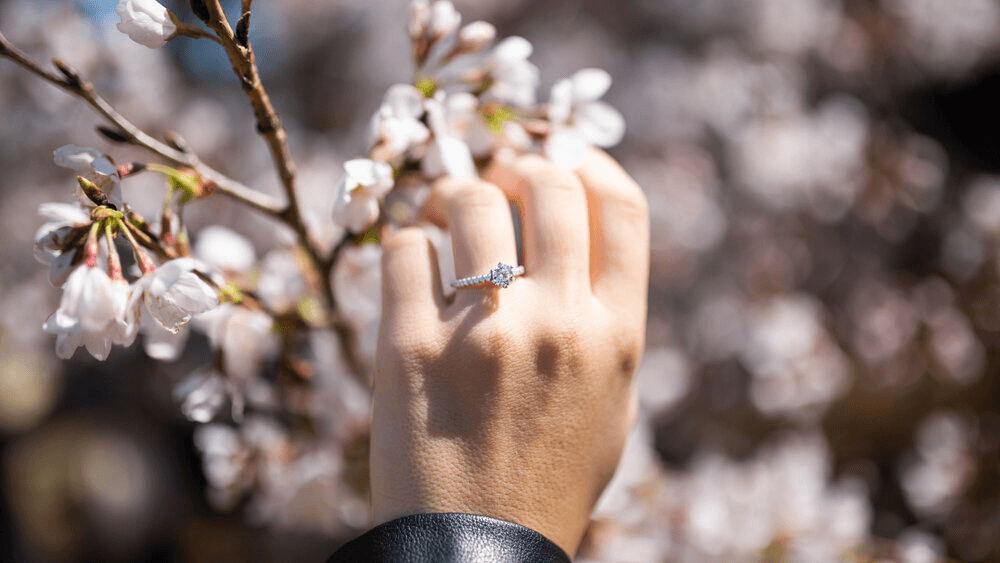Don’t Get Duped: Real Diamond Secrets

By Gary A.

Edited by Olivia H.
Published Dec 24, 2021
Edited on Mar 31, 2025
When it comes to figuring out how to tell if a diamond is real, a few simple tests can help reveal whether you’re holding a genuine gemstone or an imitation.

- 15 Quick Tips for Examining Diamond Authenticity in Engagement Rings
- Introduction: The Pursuit of Authenticity
- Understanding Diamond Properties
- Diamonds vs. Imitations: Key Differences
- DIY Diamond Tests at Home
- Professional Verification Methods
- Real vs. Lab-Grown Diamonds
- Finding the Right Jeweler
- Our Expert Take
- 12 FAQs
Before we dive deeper into the specifics, here are some practical tips to help guide your decision-making process:
15 Quick Tips for Examining Diamond Authenticity in Engagement Rings
When buying a diamond engagement ring, it’s crucial to know how to discern a real diamond from a fake. Here are essential tips to guide you in verifying the authenticity of diamonds:
- Tip 1: Conduct the Fog Test: Breathe onto the diamond. A real diamond will not fog up easily due to its high thermal conductivity.
- Tip 2: Use the Water Test: Drop the diamond in a glass of water. Being dense, a real diamond will sink to the bottom.
- Tip 3: Check for Flaws and Inclusions: Real diamonds usually have minor imperfections. Use a magnifying glass to look for tiny flaws or inclusions.
- Tip 4: Examine the Refraction Look at the diamond from the top. Real diamonds bend light sharply, making it impossible to see through them.
- Tip 5: Observe the Reflections Real diamonds reflect light in shades of gray. If you see colorful reflections, be cautious as it might indicate a fake.
- Tip 6: Test the Hardness: Gently scratch the diamond against a piece of glass. A real diamond should easily leave a mark.
- Tip 7: Inspect the Setting and Mount: High-quality diamonds are usually set in high-quality metals like gold or platinum. Check for hallmarks inside the ring.
- Tip 8: Look for Laser Inscriptions: Many certified diamonds have microscopic inscriptions on the girdle. You might need a jeweler’s loupe to see these.
- Tip 9: Analyze the Sparkle and Fire: Observe the diamond under light. Real diamonds have a balanced sparkle with both white light (brilliance) and colored light (fire).
- Tip 10: Use the Transparency Test Place the diamond over printed text. If you can read through it, it’s likely not a real diamond.
- Tip 11: Verify the Diamond’s Weight: Compare the weight of the diamond to known weights. Fake diamonds like cubic zirconia are typically heavier.
- Tip 12: Check for Breathability Real diamonds usually don’t have closed-back settings as they need to ‘breathe’.
- Tip 13: Evaluate the Diamond’s Cut: A poorly cut diamond, regardless of its authenticity, can lack brilliance and fire. The quality of the cut can be a strong indicator of its overall quality.
- Tip 14: Observe Under UV Light: Under a UV light, a real diamond might exhibit blue fluorescence. Lack of fluorescence doesn’t necessarily mean it’s fake, but blue fluorescence is a common feature in real diamonds.
- Tip 15: Be Wary of Too-Perfect Appearance: A diamond that appears flawless might be a sign of a synthetic or fake diamond. Real diamonds often have some natural imperfections.
Now that you’ve got these practical tips, use Jeweler AI below to find the perfect engagement ring that suits your style and budget:
Introduction: The Pursuit of Authenticity
It’s true that there is nothing quite like diamond, but there are a few gemstones, crystals and synthetics that can be confused for diamond without closer inspection. You’ll want to avoid these at all costs, not only because they are nowhere near as valuable as diamond – both in terms of financial and cultural value – but because, despite some resemblance, they do tend to fall short in some way or another, even if it’s not clear straightaway.
It doesn’t take much insider knowledge to realize that there are plenty of pitfalls laid out for unsavvy shoppers, and that, without the right approach, you could be very vulnerable to investing in a low-value dupe for a true diamond.
But, how does the diamond world keep on top of this – and how can you be sure that you will, too?
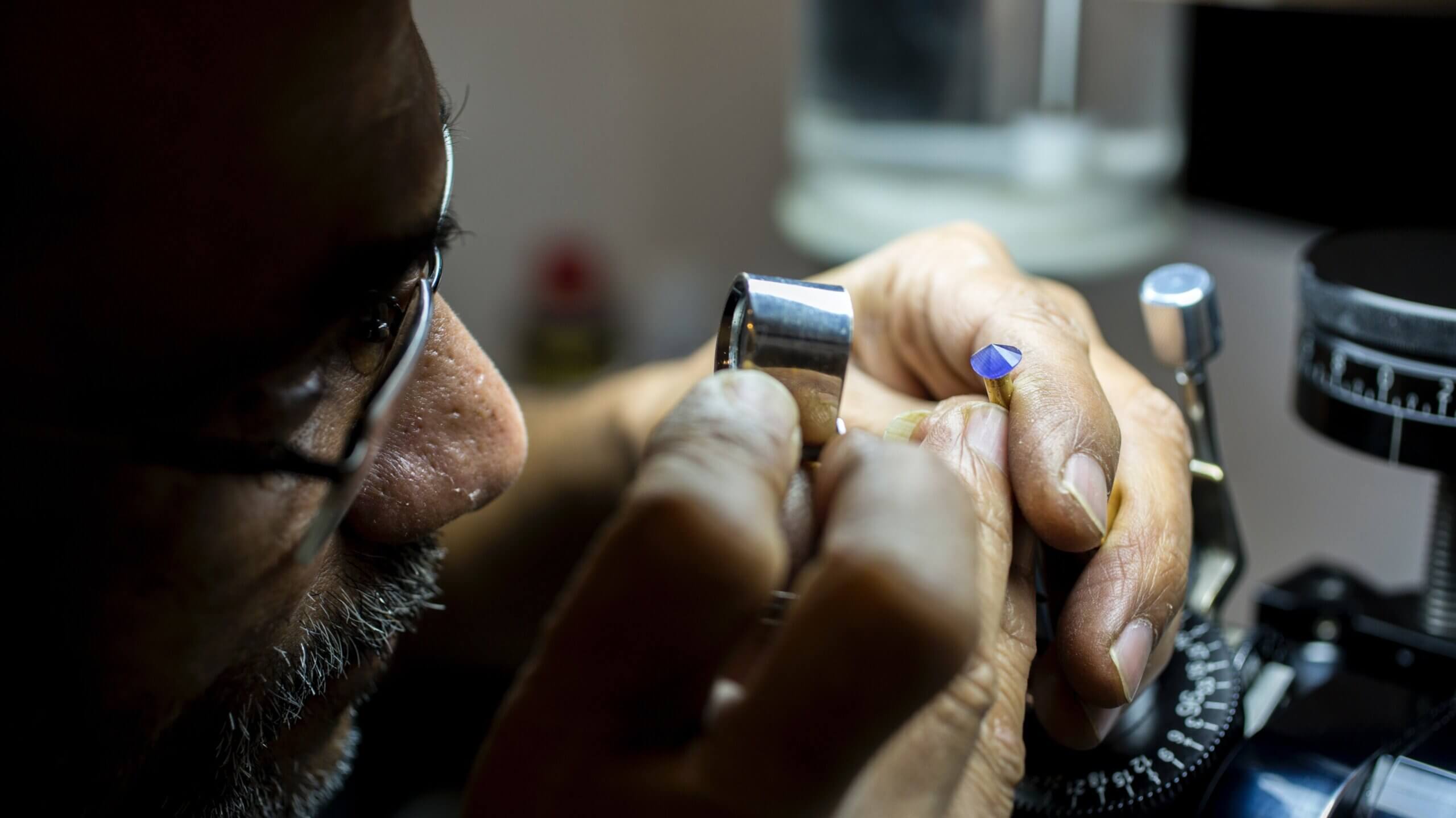
Understanding Diamond Properties
Diamonds are unique in many different ways. It’s not just their hardness and their rarity that make them so distinctive…
The Science Behind the Sparkle
One of the most revered features of diamond is its unique light performance – but, at the same time, plenty of other gemstones sparkle, too. The differences may seem subtle at first but, once you are aware of them, you won’t be able to miss them.
Diamond has the ability to ‘split’ light into its spectral colors. This property works in tandem with its many facets, which bounce light through the diamond’s girdle and pavilion – then back out of the table – in an amazing display of color and white light. A diamond also creates a lot of scintillation thanks to its unique internal structure. This is why, even if a cubic zirconia were cut with the same facets as a diamond, it wouldn’t sparkle anywhere near as much.
Diamonds vs. Imitations: Key Differences
Cubic zirconia, moissanite and white sapphire are all common dupes of diamond.
While each of these substances holds some pretty obvious visual similarities to diamond, their differences are relatively easy to spot if you hold a moderate amount of experience in diamonds, or gemology in general. For first-time shoppers, however, this is so rarely the case – and, while you know the basics of what a diamond should look and behave like, you probably don’t feel comfortable getting into specifics.
This is why some shoppers will end up fooled. It is, however, very important to note that a reputable online seller like us won’t be trying to pass off any other gemstone as diamond. No reputable business – whether a chain, independent store, or an online vendor – would risk their reputation by selling fake diamonds.
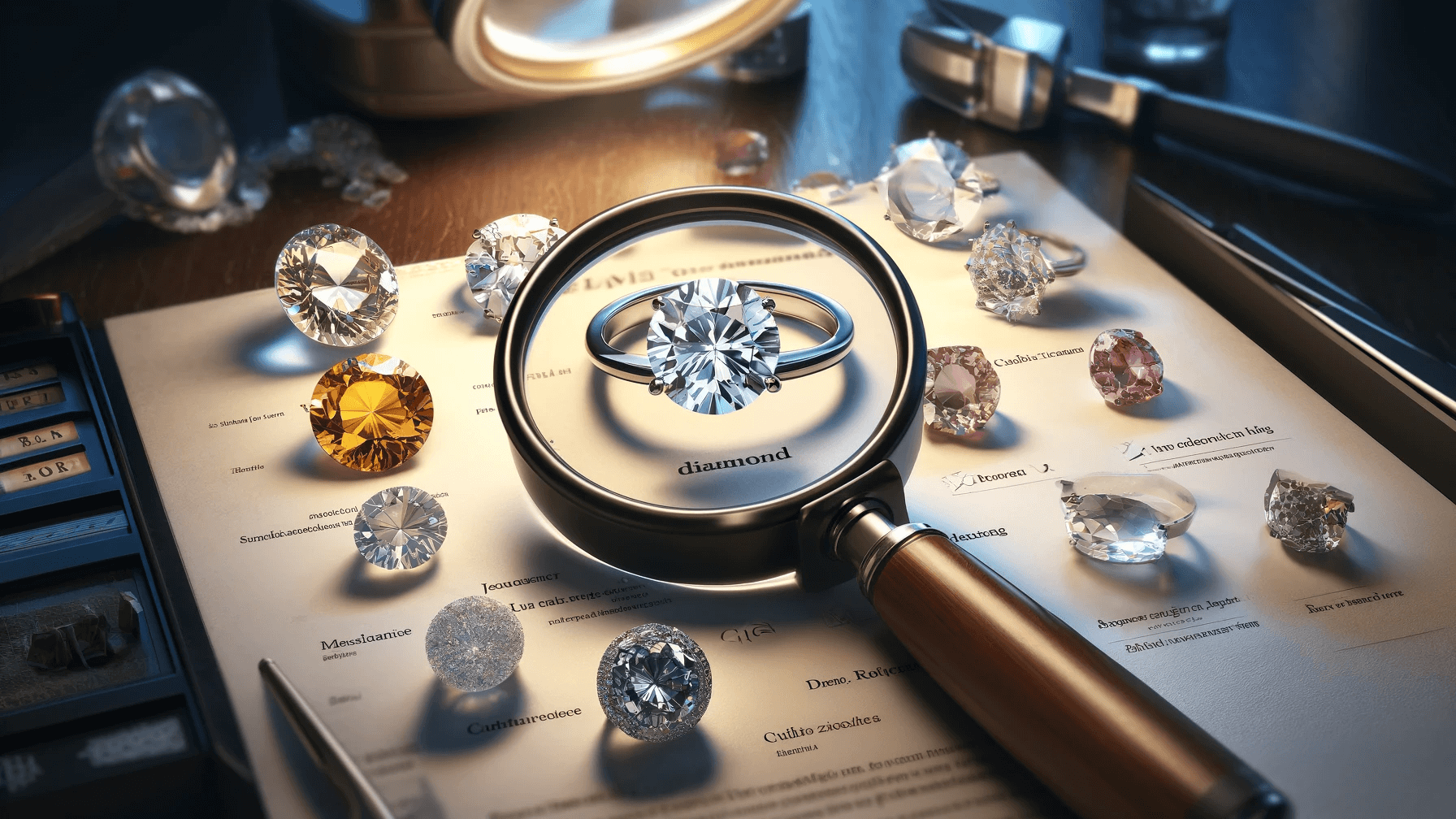
DIY Diamond Tests at Home
There are plenty of at-home tests you can do, though most of them don’t provide definitive results on their own, but offer some pretty strong indications that your diamond is real. They’re no replacement for a reputable seller, though, so don’t use at-home testing as your only reassurance that a diamond is real.
The Fog Test: A Quick Indicator
Breathing on a diamond will create a slight fog (as it does when you breathe on cool glass). The key difference between diamond and glass, however, is that the fog on a diamond will disappear very quickly – almost instantly. If it stays there for a second or two, it’s likely not a real diamond.
The Scratch Test: Not Worth the Consequences
Diamond scores the highest on the Mohs Scale of Hardness, but keep in mind that, with no special tools to hand, you probably won’t be able to differentiate between the hardness of diamond and the hardness of, say, a copper penny – despite the fact that they’re nowhere near each other on the scale.
Most people know that a real diamond is hard enough to scratch glass, but you can’t be sure your stone is a diamond using this test alone since there are plenty of other gemstones strong enough to do this.
Both moissanite and cubic zirconia will leave a scratch on your mirror, too, so don’t ruin a perfectly good piece of glass testing this.
Water and Newspaper Tests: Simple Yet Effective
Diamonds sink as a result of their high density, and water has been used as a simple test for diamonds in the past. Obviously, this test is a wasted effort if the stone in question is set within a ring – or any other piece of jewelry. But, if you happen to have a loose gemstone lying around, this can be a useful test, although it shouldn’t be considered definitive.
While diamonds are transparent – with the exception of significant inclusions – you can’t look through them like a piece of glass, as they will distort any image on the other side.
If you place a diamond with the table (the flat, upper portion) against the page of a newspaper, for instance, you won’t be able to read the words through it.
Light and Reflection: Observing Brilliance and Fire
Real diamonds will create a very distinctive pattern of brilliance (white light) and fire (colored light) when hit by any natural or unnatural light source.
While you won’t be able to pick up on it straight away, there are some key differences between the way diamond sparkles and the way other stones like CZ and moissanite sparkle.
For instance, both cubic zirconia and moissanite produce significantly more fire and a lot less brilliance. It might take a side-by-side comparison for you to recognize the difference at first, but it is possible.
While you won’t get any definitive results on your own, you can use a flashlight to create as much sparkle as possible on the surface of your diamond and judge those flashes of fire and brilliance for yourself.
In this experiment, the flashlight is merely a convenient light source used to generate as much sparkle as possible. It’ll work a lot better if you are able to compare your stone with a cubic zirconia or moissanite, and a real diamond, at the same time – but that’s probably not possible if you’re doing this from home.
Professional Verification Methods
Some diamond testers can be ‘fooled’ by moissanite, which is why the most reliable option is always to get your diamond checked out by a jeweler. Their expert eye is often worth more than a cheap tester.
Jeweler’s Loupe and Microscope Insights
The best way to look at (and understand) a diamond’s unique fingerprint –along with ensuring it’s there in the first place – is through a jeweler’s loupe. This is a small, powerful magnification tool that enables jewelers to study the very intricate parts of a diamond that aren’t visible to the naked eye.
A jeweler has the experience to recognise a diamond when they see one and to start figuring out its value.
You can find out more about using a jeweler’s loupe here.
The Role of Certifications in Diamond Authenticity
The best way to ensure the authenticity of a diamond is to check that it is accompanied by a GIA report – and, again, ensure you are buying from a reputable seller. At Willyou.com, we ensure every diamond is officially checked and tested by a diamond expert.
You should never take a risk on a diamond that has not been formally graded by a reputable lab.
You can read our full guide to diamond certification here. At WillYou.com, we only recommend our readers opt for diamonds that are accompanied by a GIA report – or, failing that, AGS certification.
Not all ungraded diamonds are fake, but no ungraded diamond is worth your time or, more importantly, your money.
Real vs. Lab-Grown Diamonds
While lab-grown diamonds are real diamonds with the same physical, chemical, and optical properties as natural diamonds, the term “real diamonds” usually refers to those that are naturally mined from the earth.
Finding the Right Jeweler
A reputable jeweler will never sell a fake diamond under the claim that it is a real one.
Plenty of jewelers stock jewelry that features a wide range of other gemstones. While they’re nowhere near as popular for engagement rings, inexpensive alternatives like cubic zirconia are still popular for other types of jewelry, so it’s definitely not unusual for jewelers to have them on sale.
You are not going to ‘accidentally’ invest thousands of dollars into an inexpensive lookalike, however.
At WillYou, our aim is to educate shoppers and dispel any of the normal worries people have when they’re investing in a diamond – or any valuable item of jewelry – for the first time. We only ever sell diamonds that we believe are worth the money – and worthy of sitting on your fiancee’s finger for decades to come!
Our Expert Take
Whether you’ve yet to buy your diamond, or already own one that you’re not totally sure about, the bottom line is this: only an expert jeweler or gemologist will be able to give you the information you need to be 100% sure.
There’s a major difference in financial and cultural value – not to mention beauty and durability – between diamond and some of the more convincing alternatives. It’s totally understandable that so many people are preoccupied with the idea of investing thousands of dollars into something inauthentic.
The secret to avoiding this lies in research, but also in purchasing from a reputable online seller. We have insight that takes decades to develop, and our high standards ensure that every diamond is legitimate.
There will always be sellers looking to take advantage of the mystery surrounding buying a diamond, in order to sell something invaluable for thousands of dollars. That’s why we’re firm believers of the fact that removing the mystery from the process of buying a beautiful diamond is the most valuable thing you can do as a shopper.
12 FAQs
- Q: How can I tell if a diamond is real at home?
- A: You can perform several tests, like the fog test (real diamonds don’t fog up easily), the water test (real diamonds sink in water due to their density), or checking for inclusions and flaws using a magnifying glass.
- Q: Can a real diamond scratch glass?
- A: Yes, due to its hardness, a real diamond can scratch glass. However, this isn’t a foolproof test as other hard materials can also scratch glass.
- Q: Do real diamonds have rainbow colors?
- A: Real diamonds can show a spectrum of colors in their sparkle (fire), but they primarily reflect light in shades of gray. Excessive rainbow colors might indicate a fake.
- Q: Will a real diamond float or sink in water?
- A: A real diamond will sink in water because of its high density.
- Q: How does the fog test work for diamonds?
- A: Breathe on the diamond. Real diamonds disperse heat quickly and won’t fog up, while fake diamonds will show condensation.
- Q: Can you see through a real diamond?
- A: Real diamonds refract light in such a way that you cannot see clearly through them. If you can see clearly through the diamond, especially if looking straight down through the table (top), it might be fake.
- Q: What should I look for in the diamond’s setting?
- A: Check for high-quality settings like gold or platinum. Real diamonds are usually set in quality metals.
- Q: Do real diamonds sparkle in the dark?
- A: No, diamonds need a light source to sparkle. They don’t emit light in the dark.
- Q: Are there any specific flaws to look for in real diamonds?
- A: Real diamonds often have tiny natural flaws called inclusions. Completely flawless stones are rare and might be synthetic or treated.
- Q: How do I know if a diamond is real with a black light?
- A: Under UV light, many real diamonds will exhibit a blue fluorescence. However, the absence of blue fluorescence doesn’t necessarily mean the diamond is fake.
- Q: What does it mean if a diamond has no inclusions?
- A: While some diamonds can be flawless, a complete absence of inclusions might indicate a synthetic or fake diamond.
- Q: Can the weight of a diamond indicate its authenticity?
- A: Fake diamonds, like cubic zirconia, are heavier than real diamonds of the same size, so a weight test can sometimes help in determining authenticity.
Unearth the truth about your diamond with Jeweler AI – your smart guide in the dazzling world of authentic diamond engagement rings.
FOLLOW-UP GUIDE SERIES





